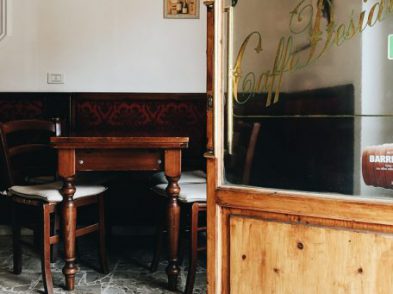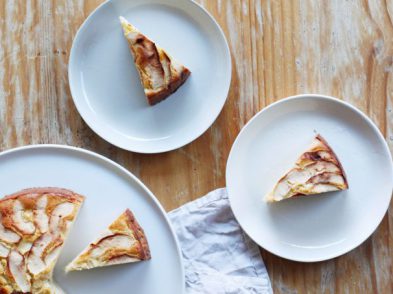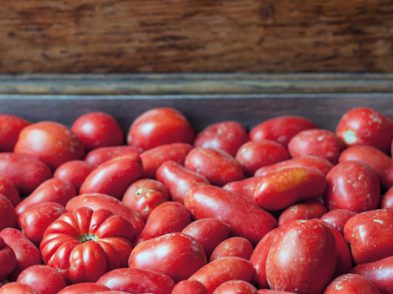Gelato may just be one of the world’s favourite inventions. Sun-soaked memories of eating it as a child are certainly imprinted on practically every Italian’s mind. My mother-in-law recalls Sunday afternoon treats, when her father would take her to the local gelateria to choose between the two handmade flavours available: plain cream or chocolate.
From the vantage point of the twenty-first century, it may seem incredible that some form of iced delight could have existed before the modern luxury of freezers. But the history of ices and ice cream actually reaches back beyond ancient Rome (Roman emperor Nero served his guests snow flavoured with honey and fruit) to ancient Chinese and Arabic cultures, which understood how to use salt with ice collected from mountain tops to create freezing temperatures. The word sorbet, in fact, comes from the Arabic word scherbet, meaning ‘sweet snow.’
But the gelato that we know and love today-rich and creamy, bursting with flavours of fresh fruit, nuts, chocolate or spices-comes from Italy.
In his 1891 cookbook, Science in the Kitchen and the Art of Eating Well, Pellegrino Artusi includes a chapter listing no less than 24 gelato recipes(on this page I offer a recipe adapted from that chapter). In discussing gelati, he ponders the origins of the irresistible sweet. His research led him to Caterina de’ Medici, whose band of Florentine pastry chefs and cooks followed her to Paris in 1533 when she married Henry II of France. She served gelato and sorbet to astounded French guests and, according to Artusi, the recipe was kept secret for at least another century.
It was in 1660 when a Sicilian, Francesco Procopio dei Coltelli, opened a café in Paris and found huge success selling gelato and flavoured ices (granitas) to fashionable Parisians. The recipe was copied, spreading eventually to England and the rest of Europe.
But where did Caterina de’ Medici get her gelato recipe centuries before?
Artusi fails to answer this question, but there are a few popular legends floating around, crediting Florentines to the invention of the first modern gelato recipe. My favourite version involves a certain Florentine known as Ruggieri, a humble poultry vendor. The Medici court held a contest for ‘the most singular dish that has ever been seen,’ and while famous chefs from all over Tuscany competed with exquisite dishes, Ruggieri won with his simple sorbet, or what was called, dolcetto gelato: frozen dessert.
The legend continues that the ambitious Caterina, intending to show off Florentine superiority in the kitchen, asked Ruggieri to accompany her to France in order to create his gelato to stupefy her new French court. Ruggieri, however, did not like the fame and problems that came with it in Paris, and begged Caterina de’ Medici to let him return to his chickens, leaving his recipe in her hands.
Another claim to the invention of modern gelato is Bernardo Buontalenti, one of the favourite architects of Grand Duke Cosimo I, Caterina de’ Medici’s cousin. The talented mannerist architect not only designed theatrical stage sets for the Medici court, but was also responsible for renovations in the city of Livorno, the palace of Bianca Cappello and decorations of the Boboli Gardens. The story goes that he was even entrusted to design the banquet for the wedding celebrations in 1600 of Maria de’ Medici to Henry IV, where he apparently served his famous gelato, known as Crema di Buontalenti, a recipe (some say borrowed from Ruggieri) that he had been known for since 1565.
As early as 1570, Renaissance cookbook author Bartolomeo Scappi wrote down a recipe for Marasche sorbetto, a grape sorbet, which is essentially a semi-frozen grape jam. By the late 1600s, cookbook author Antonio Latini created a recipe book of sorbets and granite that included a very modern-sounding lemon sorbet made with three libre of sugar and three lemons mixed in a bowl over three and a half libre of salt and thirteen libre of snow.
But let’s get back to Café Procope, as Francesco Procopio’s successful Parisian café was known. The Sicilian, who started out as a fisherman, gained his cooking skills in Florence before heading to Paris with a new and improved invention: a gelato-making machine. He had been experimenting with using salt to lower the temperature of his icy concoctions and had now created a way to sell his fruit-based gelato-also known as sorbet-to the public for the first time. It had previously only been known to royalty.
The world never looked back!
Did you know? At this year’s Florence Gelato Festival, a new flavour was invented by 4 Florentine gelaterie, called Florentine Festina Lente.
RECIPE
Sorbetto di Fragole
(Strawberry sorbet)
Adapted from Artusi’s cookbook of 1891, serves 8
Ingredients
300 grams of ripe strawberries
250 grams of fine caster sugar
½ litre of water
One large lemon from the garden (Artusi says they are more flavourful!)
One orange
Method
Bring the water and sugar together to a boil in a pot for 10 minutes until the mixture becomes a syrup. Purée the cleaned strawberries, then add the pulp and juice of the orange and lemon. Add the cooled syrup to the purée and mix well.
If you have an ice-cream maker, add the mixture and process until it’s done. If not, you can successfully use a regular freezer. You will simply need to check on it about every 40 minutes or so. Give it a stir with a fork each time, until it’s frozen. If you are making the sorbet well ahead of time, give it a few minutes to soften slightly before serving.
Variation
To make a gelato rather than a sorbet, add three beaten egg whites to the ingredients and use only about 250 grams of the strawberries. The egg whites should be beaten until they form stiff peaks. Fold them into the strawberry and syrup mixture before freezing. The result is a wonderful creamy, mousse-like texture with a delicate flavour.








